The Company Town (23 page)
Authors: Hardy Green

The intersection of Broadway and Fifth Avenue, here under construction in 1907, would become the central axis around which company engineers plotted Gary, Indiana.

Frank Phillips, a former barber and bond trader, built Phillips Petroleum into a vertically integrated, $130 million company by 1925.
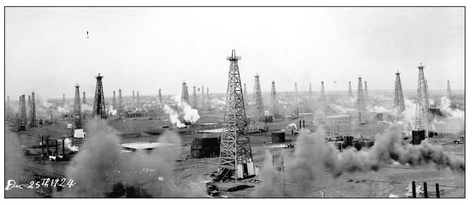
Bartlesville, Oklahoma, was the site of several major oil strikes in the early 1900s, but the town also became a major administrative center for Phillips and other oil companies.
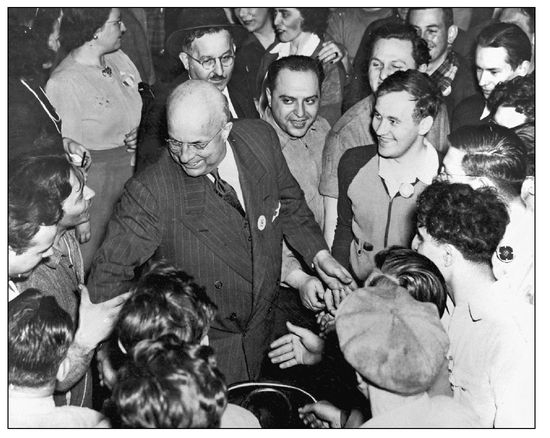
Henry J. Kaiser was a pioneer of welfare capitalism, offering twenty-four-hour childcare, workplace-safety programs, and comprehensive medical care to his World War II shipyard workers.
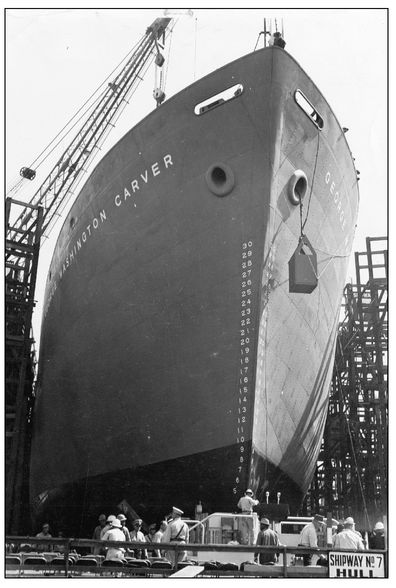
The “liberty ship”
SS
George Washington Carver
just prior to its launch in 1943.
George Washington Carver
just prior to its launch in 1943.
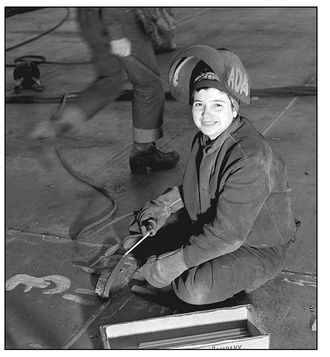
A woman welder at the Kaiser shipyard in Richmond, California, in 1943.

The so-called “hillbilly girls” who worked at Oak Ridge's Y-12 facility during World War II had no idea that they were producing U-235 for use in an atomic bomb.
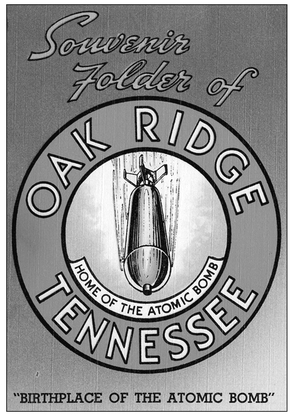
Like other company towns discussed, Oak Ridge is today a tourist destination complete with souvenir postcards.
Political struggle between local politicians and corporate interests continued for several years. The 1909 mayoral election pitted Knotts against the Land Co.'s candidate, Republican John A. Brennan. The town's only newspaper, the
Gary Daily Tribune
, supported Brennan, but Knotts created another paper to support his candidacy, the
Evening Post
. Affairs quickly turned messy: The county's Republican sheriff arrested Knotts on a charge that he had defamed Brennan. There were near riots as Republicans brought in dozens of immigrants to cast votes for the GOP. Knotts won by seventy-one votes, but his triumph was short-lived. The Republican-controlled Lake County government harassed Knotts continuously, filing fourteen charges against him, ranging from embezzlement to perjury and election fraud. No trial ever took place, but the charges damaged his reputation. Then in 1913, he was opposed by Citizens Party candidate Roswell O. Johnson, whose backers included independents, Bull Moose progressives, unhappy Democratsâand U.S. Steel. Spies observed Democratic rallies, and company foremen punished workers who attended them while ushering right-voting employees to the polls. Immigrants, who played little political role elsewhere, were eligible to vote in Indiana shortly after they declared an intention to become U.S. citizensâand ethnic bosses or foremen herded them to the polls. Johnson won by 1,516 votes. Republicans would dominate city politics from that time into the 1930s.
12
Gary Daily Tribune
, supported Brennan, but Knotts created another paper to support his candidacy, the
Evening Post
. Affairs quickly turned messy: The county's Republican sheriff arrested Knotts on a charge that he had defamed Brennan. There were near riots as Republicans brought in dozens of immigrants to cast votes for the GOP. Knotts won by seventy-one votes, but his triumph was short-lived. The Republican-controlled Lake County government harassed Knotts continuously, filing fourteen charges against him, ranging from embezzlement to perjury and election fraud. No trial ever took place, but the charges damaged his reputation. Then in 1913, he was opposed by Citizens Party candidate Roswell O. Johnson, whose backers included independents, Bull Moose progressives, unhappy Democratsâand U.S. Steel. Spies observed Democratic rallies, and company foremen punished workers who attended them while ushering right-voting employees to the polls. Immigrants, who played little political role elsewhere, were eligible to vote in Indiana shortly after they declared an intention to become U.S. citizensâand ethnic bosses or foremen herded them to the polls. Johnson won by 1,516 votes. Republicans would dominate city politics from that time into the 1930s.
12
By 1909, Gary had 12,000 inhabitants, residences valued at $2 million total, fifteen miles of paved streets, two banks, six hotels, three daily newspapers, two schools, ten church denominations, and many stores and shops. It had only two parks, neither with any playground or recreational facilities and one of which was dominated by a large water tower. Thousands of men were already at work making steel.
To attract workers, the corporation had advertised Gary's progress in newspapers across the United States and Europe, and real estate interests circulated promotional pamphlets. (“Come to Gary,” urged one Land Co. newspaper advertisement: “Become a factor in the building of this model city. Own your own home in Gary.”) The foreign publicity was particularly effective, pulling large numbers from twenty-two countries including especially Ireland, Croatia, and Serbia: Before Gary was three years old, 50 percent of its population was foreign-born. U.S.-born professionals including teachers, lawyers, newspapermen, architects, and would-be merchants came, too, in search of adventure and a new start. By 1914, Gary's citizenry had more than quadrupled to 50,000. For all of its shortcomings, the town's schools were up to the standards of most progressive cities, according to Graham Taylor. What's more, the city featured such impressive institutions as a $65,000 Carnegie-donated library and an elaborate YMCA constructed with a $250,000 personal gift from Judge Gary.
13
13

The city of Gary was only four years old when U.S. Steel began building another city, this one in the South. Fairfield, Alabama, a suburb of Birmingham, would be a manufacturing hub for the Tennessee Coal, Iron and Railroad Co., American Steel and Wire, and other corporation subsidiaries. Once again, U.S. Steel shied away from residential construction and ownership, this time not even generating a separate land company to manage development. Instead, in Fairfield the company turned over these tasks to a private real estate firm that founded the Corey Land Co., named after the town's first appellation. Here, though, as in Vandergrift but not in Gary, Corey Land hired an expert landscape architect to develop an overall plan.
It was another Bostonian, George H. Miller, who developed four main residential zones for Fairfield. Dwellings ranged from double three-room bungalows to two-story homes with baths and electricity. These were a far cry from the simple wood-frame dwellings in Kannapolis and even farther from the coal-town shacks. There was no grid in Fairfieldâinstead, streets adhered to the meandering local topography.
Yet there was one respect in which Fairfield adhered to southern custom: the town was closed to African Americans. Those who purchased lots encountered restrictions that specified that the “lot shall be used by white persons only.” That didn't mean that the industrial firms in Fairfield employed only whitesâas ever, the sweatiest, most punishing labor was reserved for blacks. Soon a cluster of Negro shanties emerged just over the Fairfield city line.
14
14
A score of such medium-size steel towns were scattered across the industrial heartland. Where U.S. Steel had Gary, Fairfield, and more, Bethlehem Steel had works at Steelton, Pennsylvania; Lackawanna, New York; and Sparrows Point, Maryland. Jones & Laughlin made steel at Aliquippa, Pennsylvania (which was run through the 1920s much like a coal company town by plant superintendent Tom Girdler); Inland Steel, at Indiana Harbor, Indiana; Colorado Fuel and Iron, at Pueblo, Colorado; and Weirton Steel, at Weirton, West Virginia (another virtual dictatorship, presided over by private company police). Such one-industry communities were home to 60 percent of U.S. steelworkers.
15
15
Other books
The Comanche Vampire by Lee Ann Sontheimer Murphy
The Last Song by Nicholas Sparks
The Zombie Saga (Book 3): Burn The Dead: Riot by Jenkins, Steven
One Snowy Night Before Christmas by Pamela Fryer
The Age of Reason by Jean-Paul Sartre
Meadow Perkins, Trusty Sidekick by A. E. Snow
The Grand Duchess of Nowhere by Laurie Graham
The Selkie by Melanie Jackson
The Boss (A Billionaire Romance) by Adams, Naomi